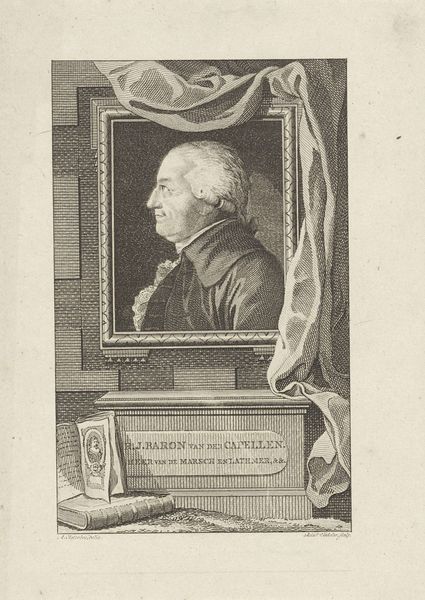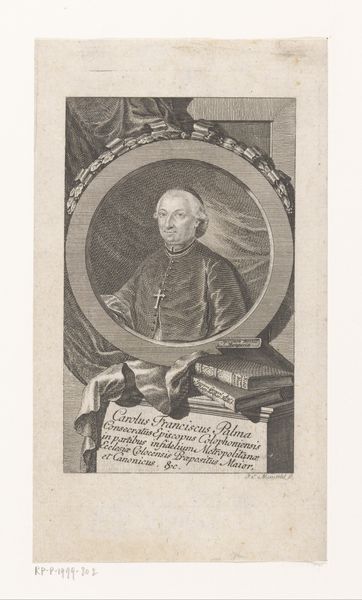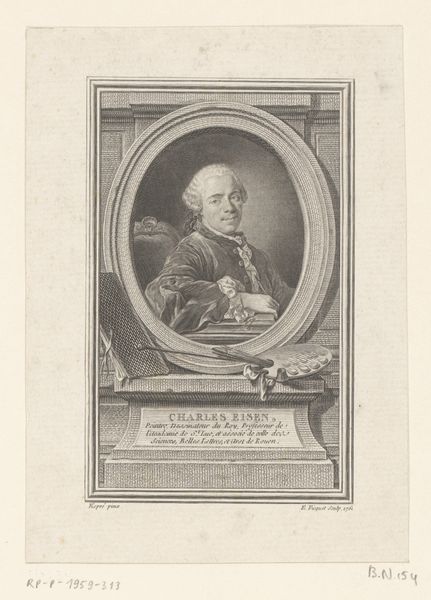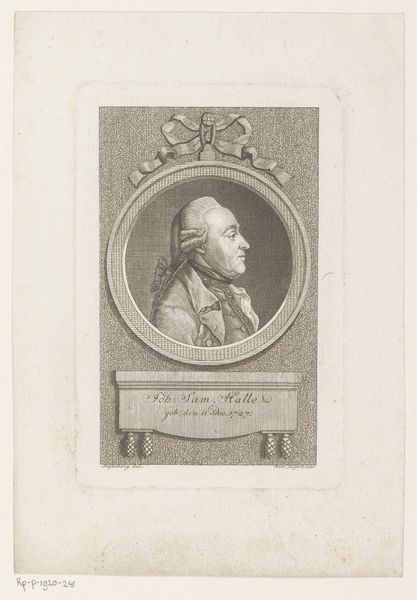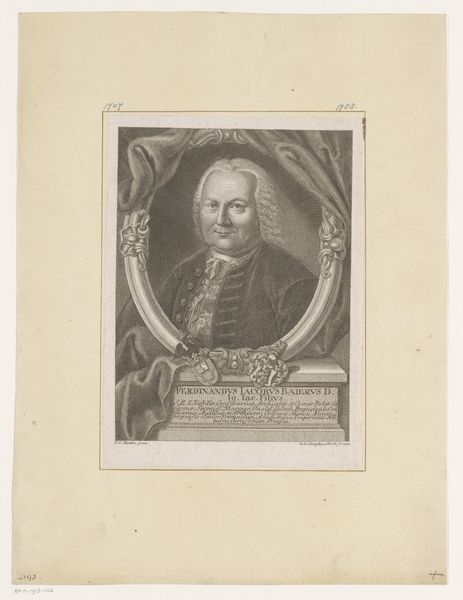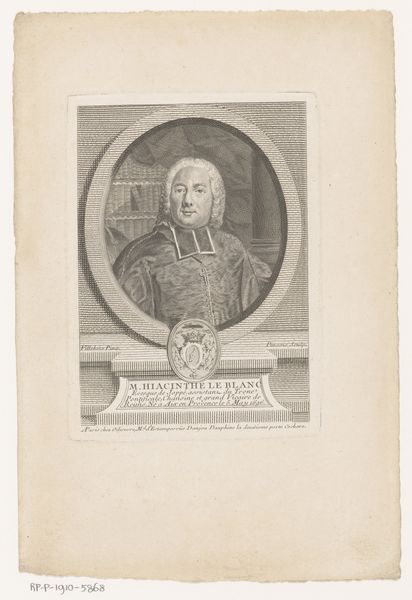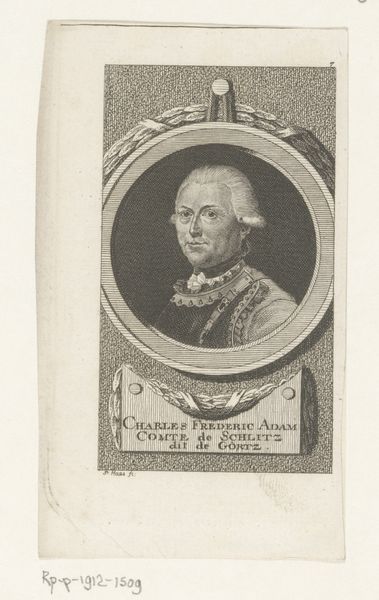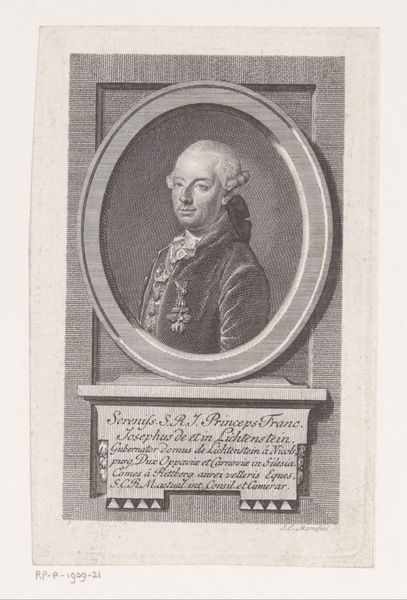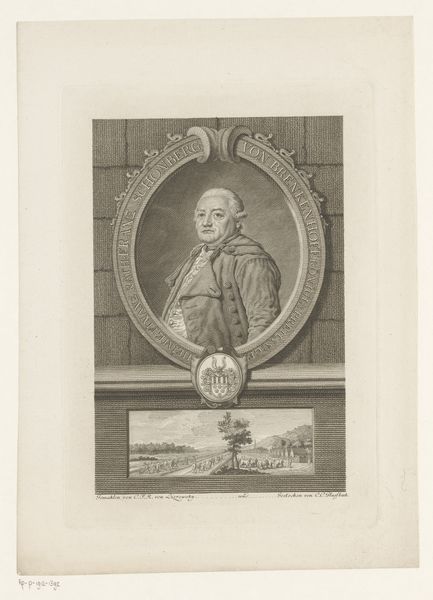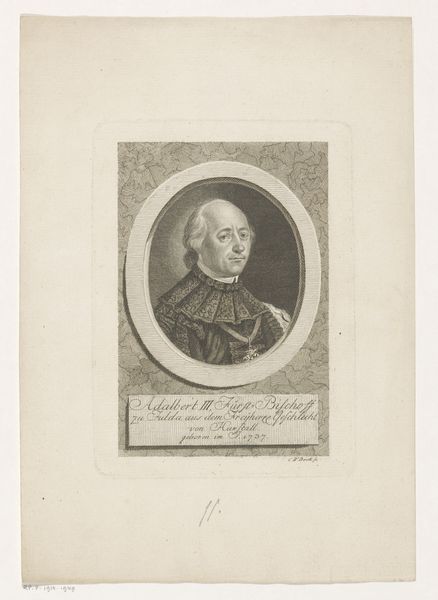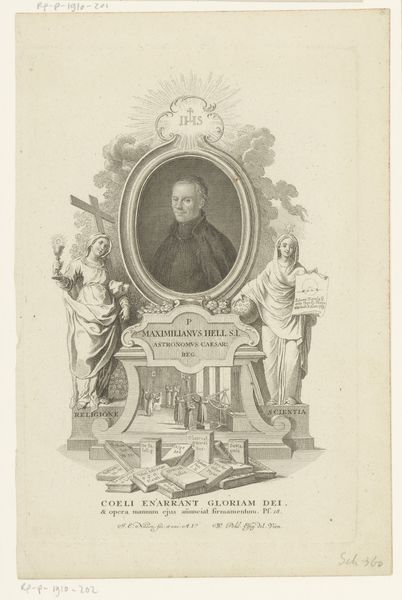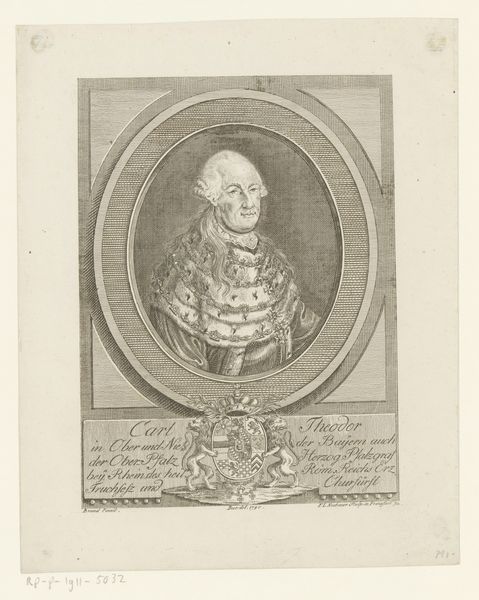
print, engraving
#
portrait
#
baroque
# print
#
old engraving style
#
history-painting
#
engraving
Dimensions: plate: 19.1 x 11.6 cm (7 1/2 x 4 9/16 in.) sheet: 22.1 x 15.6 cm (8 11/16 x 6 1/8 in.)
Copyright: National Gallery of Art: CC0 1.0
This print of Leopold II, Holy Roman Emperor, was created by Christian Wilhelm Ketterlinus in the late 18th or early 19th century using engraving. Engraving is a labor-intensive printmaking process. The artist uses a tool called a burin to carve lines directly into a metal plate, usually copper. The depth and spacing of these lines determine how ink is held and transferred to paper. Notice the incredible level of detail Ketterlinus achieved, particularly in the delicate rendering of Leopold’s face and the intricate textures of his garments. The proliferation of prints like this one was closely tied to the rise of a capitalist market for images. Engravings could be reproduced in multiples, making them accessible to a wider audience than unique paintings. The skilled labor of the engraver, however, often went unacknowledged, overshadowed by the fame of the depicted subject. This print embodies the tensions between artistic skill, mechanical reproduction, and the circulation of power and prestige in the 18th century. It makes us question the traditional distinctions between art and craft, and consider the social context in which images are made and consumed.
Comments
No comments
Be the first to comment and join the conversation on the ultimate creative platform.

